Hyundai Tucson vs Renault Mégane – Performance, range & efficiency compared
Everyday use, family trips or long-distance drives – here’s where the differences show.
Discover whether Hyundai Tucson or Renault Mégane fits your lifestyle better.
Costs and Efficiency:
When it comes to price and running costs, the biggest differences usually appear. This is often where you see which car fits your budget better in the long run.
Hyundai Tucson has a somewhat advantage in terms of price – it starts at 30600 £, while the Renault Mégane costs 35100 £. That’s a price difference of around 4423 £.
As for range, the Renault Mégane performs decisively better – achieving up to 452 km, about 382 km more than the Hyundai Tucson.
Engine and Performance:
Power, torque and acceleration say a lot about how a car feels on the road. This is where you see which model delivers more driving dynamics.
When it comes to engine power, the Hyundai Tucson has a a bit edge – offering 252 HP compared to 218 HP. That’s roughly 34 HP more horsepower.
In acceleration from 0 to 100 km/h, the Renault Mégane is hardly perceptible quicker – completing the sprint in 7.40 s, while the Hyundai Tucson takes 7.90 s. That’s about 0.50 s faster.
In terms of top speed, the Hyundai Tucson performs somewhat better – reaching 194 km/h, while the Renault Mégane tops out at 160 km/h. The difference is around 34 km/h.
There’s also a difference in torque: Hyundai Tucson pulls slightly stronger with 367 Nm compared to 300 Nm. That’s about 67 Nm difference.
Space and Everyday Use:
Cabin size, boot volume and payload all play a role in everyday practicality. Here, comfort and flexibility make the difference.
Both vehicles offer seating for 5 people.
In curb weight, Hyundai Tucson is somewhat lighter – 1520 kg compared to 1719 kg. The difference is around 199 kg.
In terms of boot space, the Hyundai Tucson offers distinct more room – 620 L compared to 389 L. That’s a difference of about 231 L.
In maximum load capacity, the Hyundai Tucson performs distinct better – up to 1799 L, which is about 467 L more than the Renault Mégane.
When it comes to payload, Hyundai Tucson slightly takes the win – 545 kg compared to 446 kg. That’s a difference of about 99 kg.
Who wins the race?
The Hyundai Tucson proves to be dominates this comparison and therefore becomes our DriveDuel Champion!
Hyundai Tucson is the better all-rounder in this comparison.
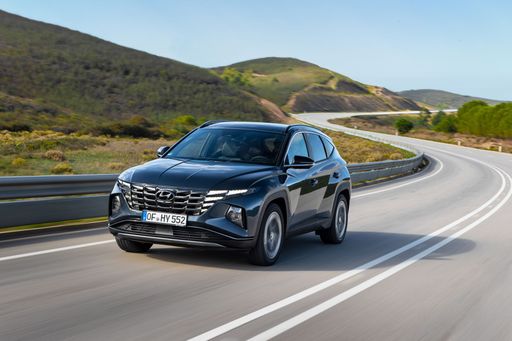
Hyundai Tucson
Hyundai Tucson
The Hyundai Tucson is a standout choice in the compact SUV segment, offering a perfect blend of style, comfort, and practicality. Its modern design is complemented by a spacious interior that provides ample room for passengers and luggage alike. With advanced technology and safety features, the Tucson ensures a smooth and enjoyable driving experience.
details @ hyundai.news
@ hyundai.news
 @ hyundai.news
@ hyundai.news
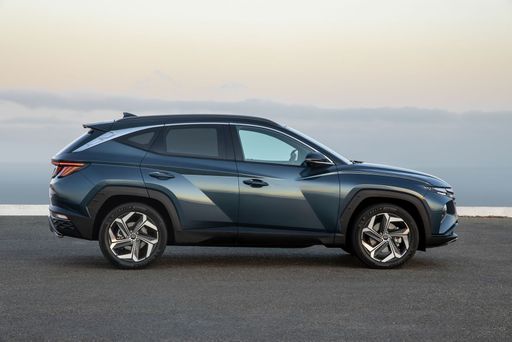 @ hyundai.news
@ hyundai.news
 @ hyundai.news
@ hyundai.news
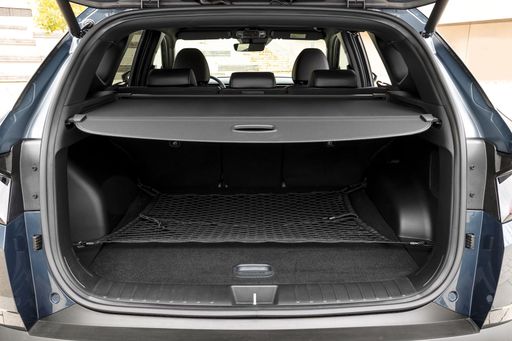 @ hyundai.news
@ hyundai.news
Renault Mégane
The Renault Mégane stands out in the hatchback segment with its chic design and advanced technology features. Its interior offers a spacious and comfortable environment, providing both driver and passengers with a premium experience. Combining impressive handling with economical efficiency, the Mégane caters to those seeking style and practicality in their daily commute.
details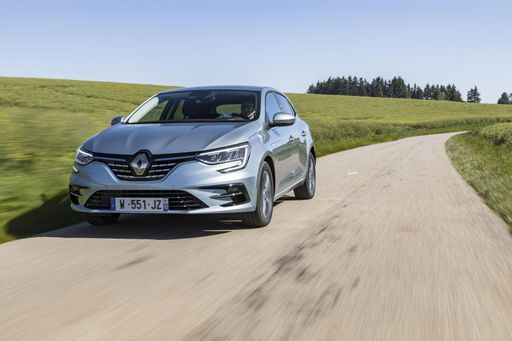 @ Renault
@ Renault
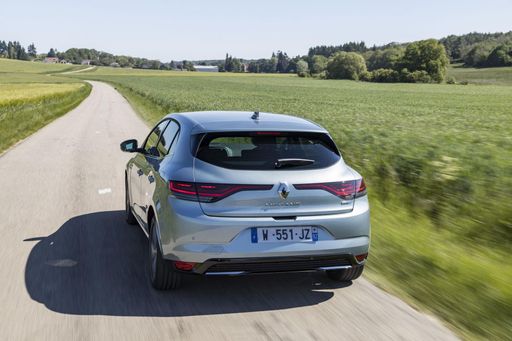 @ Renault
@ Renault
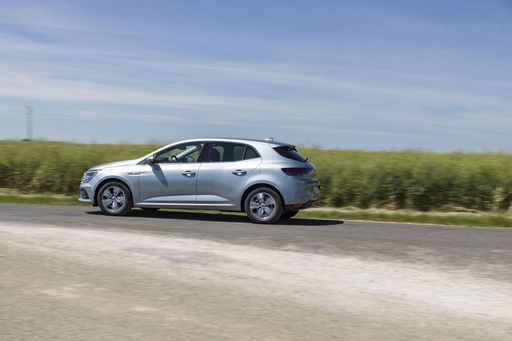 @ Renault
@ Renault
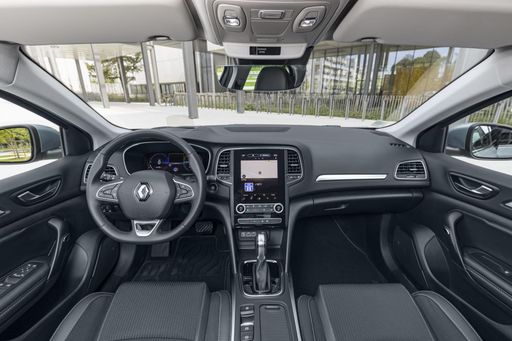 @ Renault
@ Renault
 @ Renault
@ Renault

|

|
|
|
|
Costs and Consumption |
|
|---|---|
|
Price
30600 - 46300 £
|
Price
35100 - 38500 £
|
|
Consumption L/100km
1 - 6.9 L
|
Consumption L/100km
-
|
|
Consumption kWh/100km
-
|
Consumption kWh/100km
15.40 kWh
|
|
Electric Range
64 - 70 km
|
Electric Range
452 km
|
|
Battery Capacity
-
|
Battery Capacity
-
|
|
co2
22 - 156 g/km
|
co2
0 g/km
|
|
Fuel tank capacity
42 - 54 L
|
Fuel tank capacity
-
|
Dimensions and Body |
|
|---|---|
|
Body Type
SUV
|
Body Type
SUV
|
|
Seats
5
|
Seats
5
|
|
Doors
5
|
Doors
5
|
|
Curb weight
1520 - 1889 kg
|
Curb weight
1719 kg
|
|
Trunk capacity
546 - 620 L
|
Trunk capacity
389 L
|
|
Length
4510 - 4520 mm
|
Length
4200 mm
|
|
Width
1865 mm
|
Width
1783 mm
|
|
Height
1650 mm
|
Height
1505 mm
|
|
Max trunk capacity
1721 - 1799 L
|
Max trunk capacity
1332 L
|
|
Payload
525 - 545 kg
|
Payload
446 kg
|
Engine and Performance |
|
|---|---|
|
Engine Type
Diesel MHEV, Petrol MHEV, Petrol, Full Hybrid, Plugin Hybrid
|
Engine Type
Electric
|
|
Transmission
Automatic, Manuel
|
Transmission
Automatic
|
|
Transmission Detail
Dual-Clutch Automatic, Manual Gearbox, Automatic Gearbox
|
Transmission Detail
Reduction Gearbox
|
|
Drive Type
Front-Wheel Drive, All-Wheel Drive
|
Drive Type
Front-Wheel Drive
|
|
Power HP
136 - 252 HP
|
Power HP
218 HP
|
|
Acceleration 0-100km/h
7.9 - 11.6 s
|
Acceleration 0-100km/h
7.40 s
|
|
Max Speed
180 - 194 km/h
|
Max Speed
160 km/h
|
|
Torque
265 - 367 Nm
|
Torque
300 Nm
|
|
Number of Cylinders
4
|
Number of Cylinders
-
|
|
Power kW
100 - 185 kW
|
Power kW
160 kW
|
|
Engine capacity
1598 cm3
|
Engine capacity
-
|
General |
|
|---|---|
|
Model Year
2024
|
Model Year
2025
|
|
CO2 Efficiency Class
E, F, D, B
|
CO2 Efficiency Class
A
|
|
Brand
Hyundai
|
Brand
Renault
|
What drive types are available for the Hyundai Tucson?
Available configurations include Front-Wheel Drive or All-Wheel Drive.
The prices and data displayed are estimates based on German list prices and may vary by country. This information is not legally binding.
